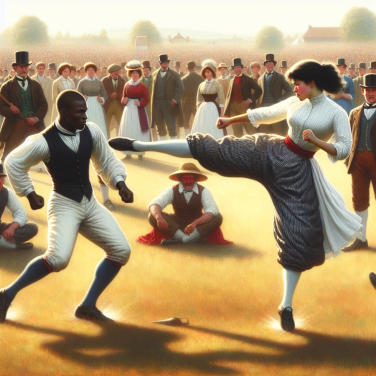Exploring the Origins and Rules of 43-Man Squamish
Within the world of unconventional sports, few have captured the imagination quite like 43-Man Squamish, a game so complex and bizarre that it has spawned a dedicated following fascinated by its intricate rule set and perplexing origins. Mad Magazine’s April 1965 issue introduced this enigmatic sport, born from the satirical minds of its creators, Tom Koch and George Woodbridge, who sought to lampoon the increasingly complicated state of college sports.
43-Man Squamish is played, as the name suggests, with 43 players on each team. The teams are split into groups with names as whimsical and confusing as the game itself: one goalie, four left and four right Inside Grouches, four left and four right Outside Grouches, four Back-Up Finks, two Half Frinks, one Fink-Out, four Leapers, three Over Leapers, two Under Leapers, five Halfbacks, and two Fullbacks. Each position has its own unique set of responsibilities, adding layers of strategic depth to the sport.
The playing field for 43-Man Squamish, known as the Flutney, is an irregularly shaped field, often described as five-sided, adding to the inherent confusion in navigating the space. At each corner of the Flutney sits a pole, known as a "gwicket", and teams score by vaulting their "Pritz" (the ball used in Squamish) across the opposing team's pole using curved sticks called "Frullips".
One of the most confounding aspects of 43-Man Squamish are the rules—of which there is a dizzying array. Among the multitude, some stipulate how players may move the ball (through intricate kicking and passing sequences called "Niblings" and "Quintzles"), while others dictate the penalizing actions resulting in a player being sent to a penalty area known as the "Loyalty Box". Penalties can range from 'Peregrination' to 'Frullip Fropping'.
The equipment used in 43-Man Squamish is as specialized as the positions on the team. Players must don a “Flotney”, the official Squamish helmet complete with a visor, and carry “Herffs”, which are the hockey-like sticks used to manipulate the Pritz.
Read also:
Fricket: The Ultimate Guide to the Lawn Game Craze
The Cultural Impact and Legacy of 43-Man Squamish in Modern Sports
The obscure and borderline ludicrous game of 43-Man Squamish, which first graced the pages of Mad Magazine in 1965, has etched itself into the annals of cultural oddities with surprising tenacity. The game, ostensibly invented as a parody to mock the increasingly complicated rules and regulations of college sports, has had a surprisingly enduring influence in sports circles and beyond. With positions such as the "Left Inside Groucher" and the "Back-Up Finks," the game was anything but conventional, yet its underlying satire struck a chord that still resonates today.
One of its most enduring legacies is its commentary on the over-commercialization and over-complication of modern sports. In a time when professional athletics are heavily laden with endorsement deals, multi-tiered leagues, and an obsession with statistics and analytics, 43-Man Squamish offers a stark contrast - a return to the chaos and the simple joy of playing for playing’s sake. This juxtaposition highlights an ongoing debate about the soul of sports; should they remain pure, unadulterated pastimes, or continue evolving into highly organized, commercialized spectacles?
Moreover, the game's outlandishness has acted as a catalyst for creativity in sporting communities. For example, in the quiet corners of some alternative recreational leagues, you will find nods to the fictitious Squamish, be it through the mockingly complex rule sets of new games or through ironic sports tournaments designed to lampoon the very nature of organized sports. The sentiment embodied by 43-Man Squamish has encouraged the birth and growth of other eccentric games such as Ultimate Tazer Ball, Chess Boxing, and even Quidditch, adapted from the Harry Potter series, which have all found their own niche followings.
Interestingly, the parody of 43-Man Squamish has found its way into corporate team-building activities. Businesses have adopted the concept to highlight the chaotic and seemingly arbitrary nature of the workplace. It serves as a metaphor for the office environment where, sometimes, roles are convoluted and team strategies can seem perplexing, yet everyone is expected to adapt and find a way to achieve the end goal.
Perhaps the most significant cultural impact of 43-Man Squamish lies in its ongoing status as a cult phenomenon.




